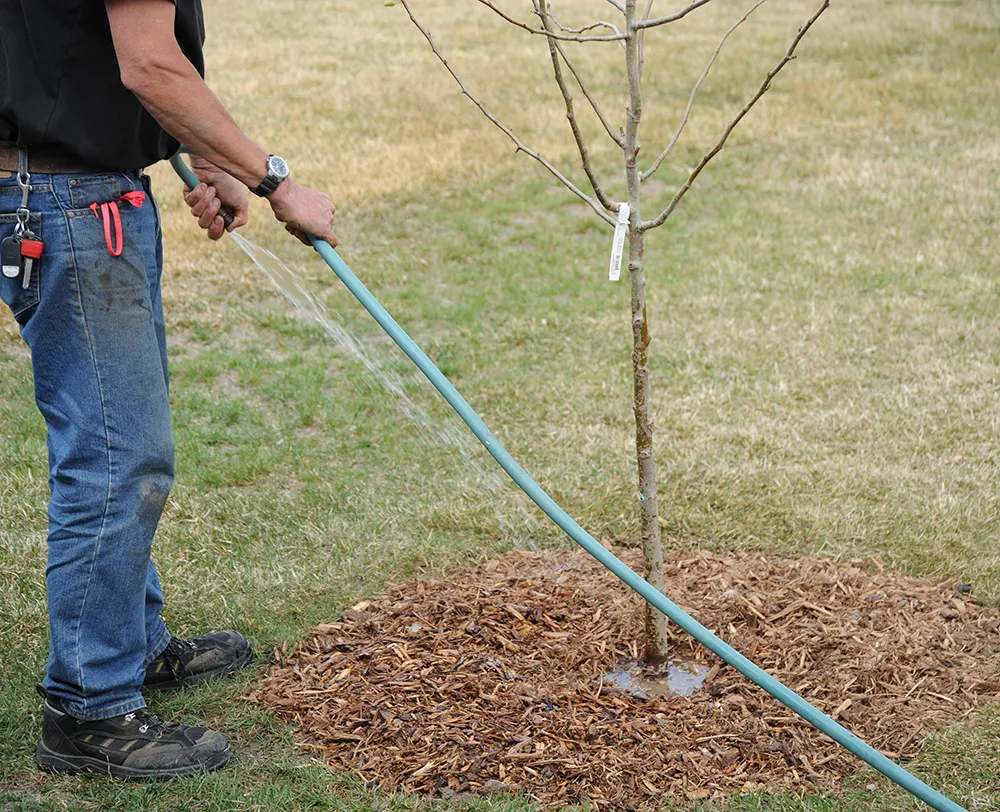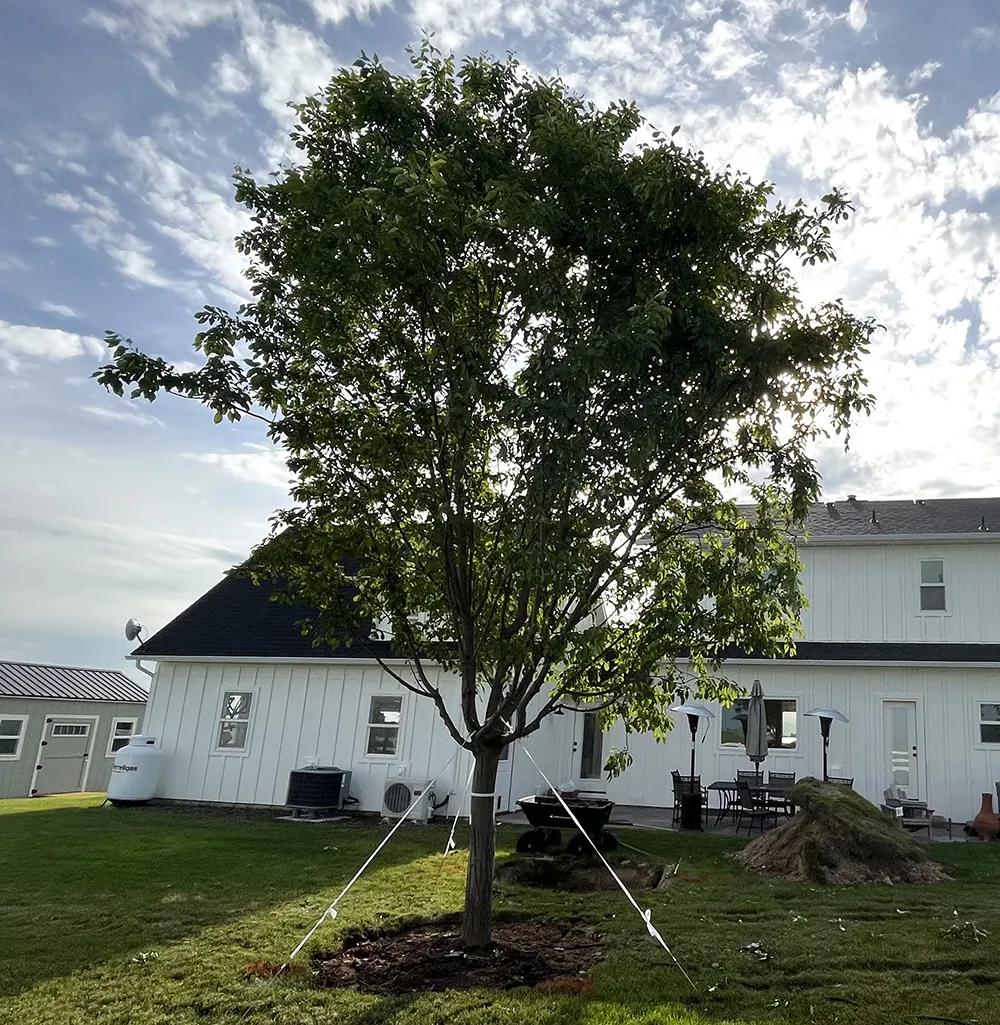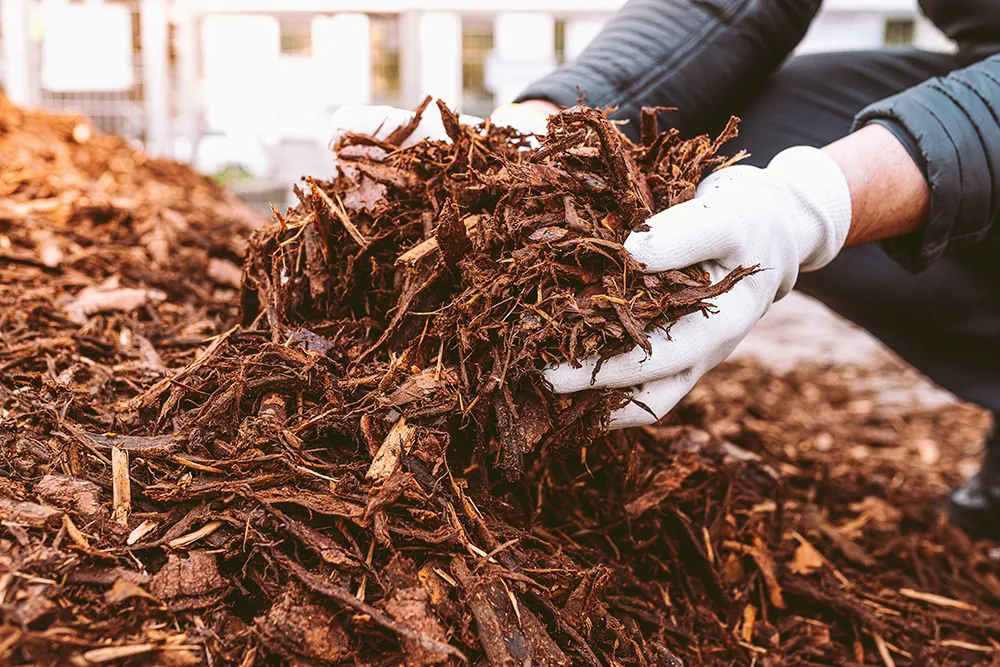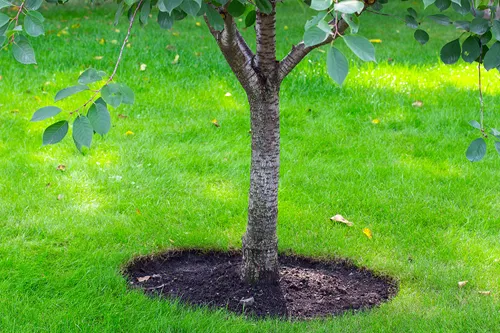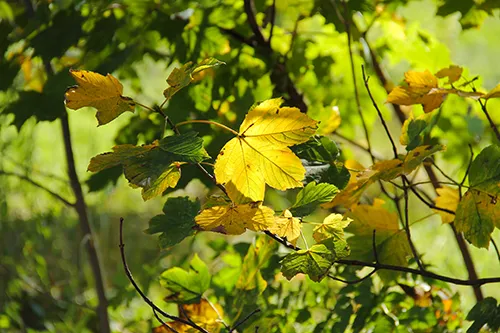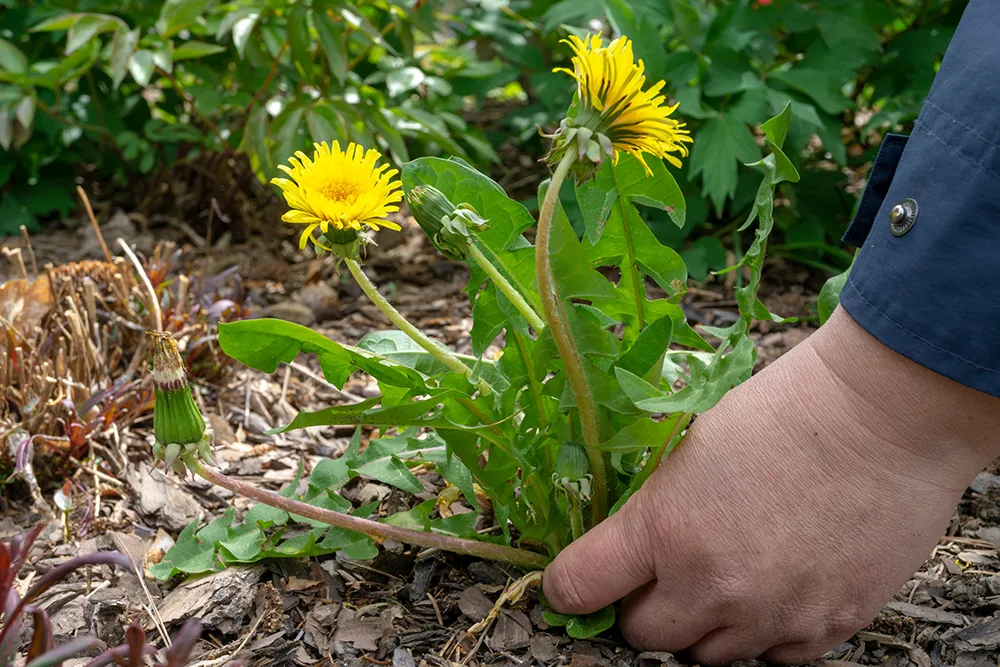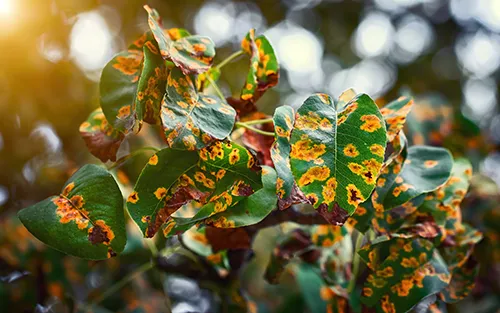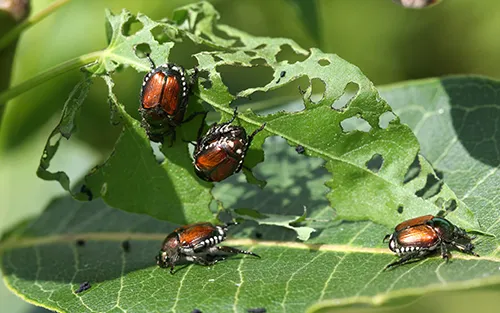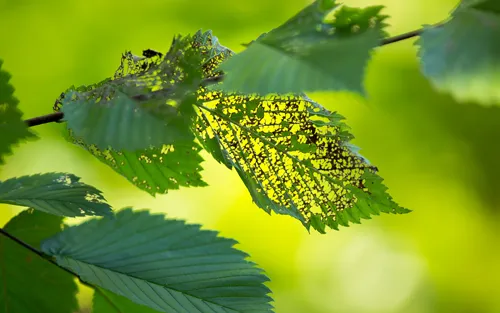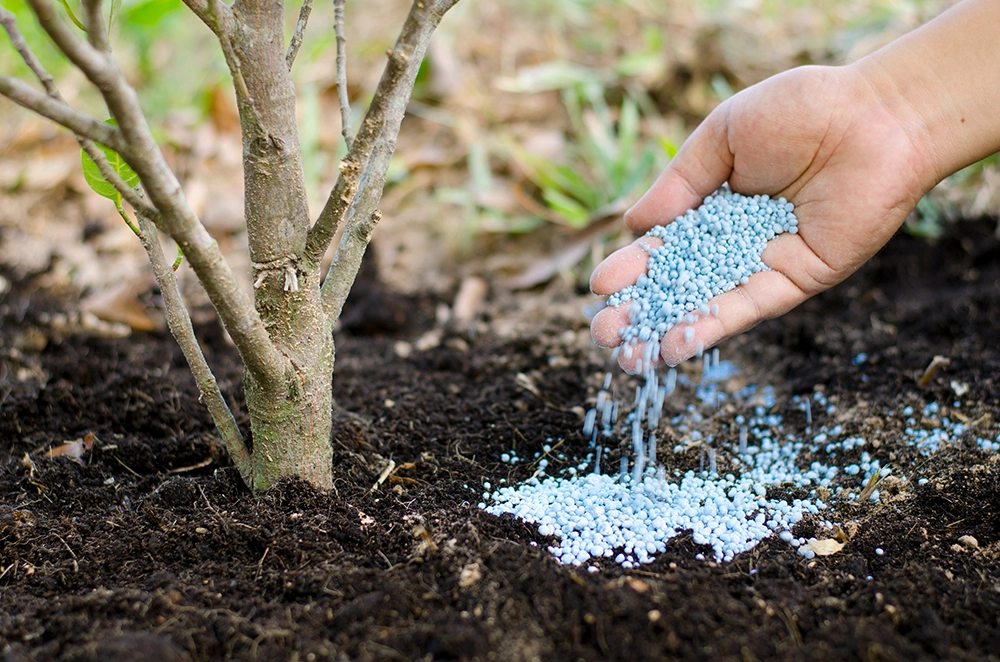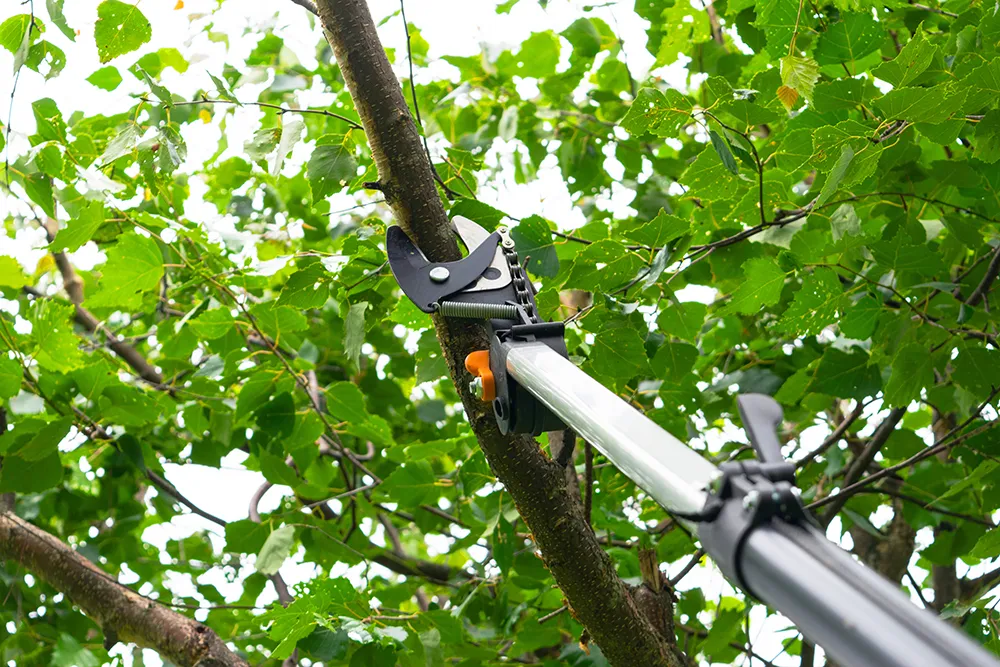Staking
Your New Tree
Staking is a practice used to anchor, support, and protect recently planted trees. There are times when staking is appropriate and can help a tree establish itself if done correctly. Staking should be done if/when the tree is exposed to high winds on a regular basis, the tree is in areas of high traffic, if your tree is not standing straight, and/or if the tree’s root ball moves in the soil when you hold the trunk and gently move it back and forth. We offer staking as an added service if needed and our professional staff will assess the tree after it has been transplanted. Ask us about this service!
WEEDS
AND HERBICIDES
Keep the area around your tree free of weeds and other competing plants. Use wood chip mulch to suppress the weeds and remove them by hand when possible. Avoid the use of herbicides near the tree as certain formulations may seriously injure or kill the tree. If you decide to use herbicides, avoid getting any on the leaves, branches, trunk or near the root area where tree roots are growing, as they can seriously injure or even kill trees. Remember the tree roots extend well beyond the perimeter of the outermost branches.
